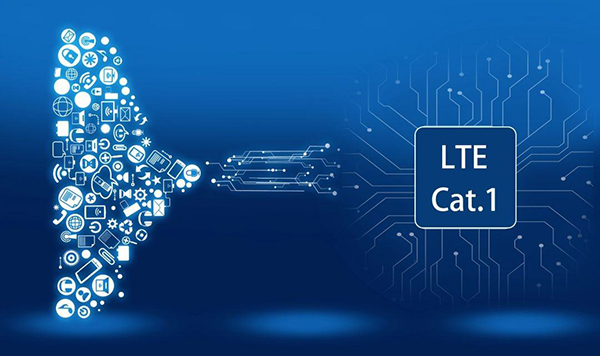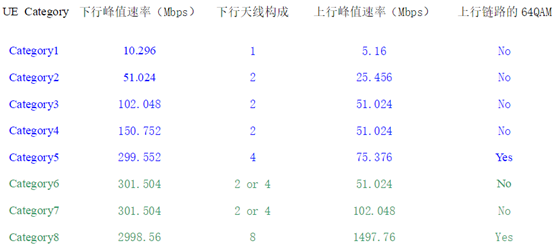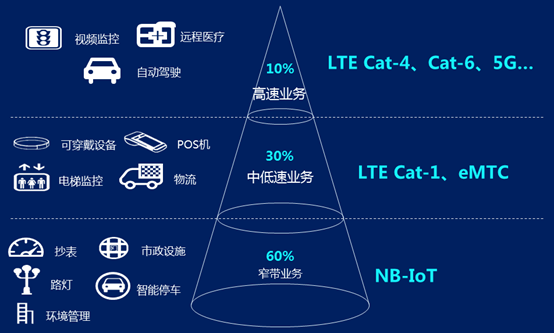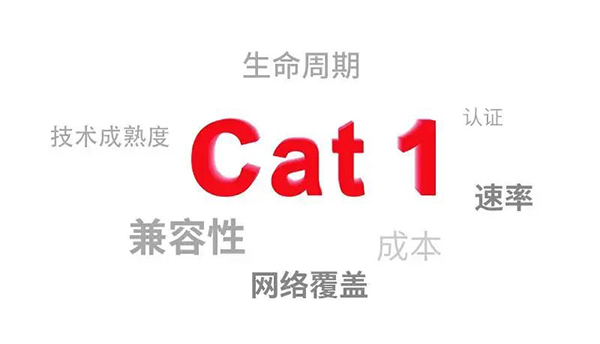In the era of the Internet of Everything, the premise of all innovations based on the Internet of Things is “connection”, and different application scenarios require different connection technologies. As new and old technologies alternate and industry user needs and scenarios become increasingly segmented, the mid-rate market between high-rate and low-rate scenarios is booming. Judging from the current development trend of cellular IoT, the opportunity for LTE Cat 1 to assume the main role of 4G IoT connections has begun.


Different from previous mobile communication technologies, 4G LTE does not provide exactly the same homogeneous services to all users. LTE network operators will hierarchize users through various methods and provide different network capability services. For example, according to the quality of service (QoS) agreement signed with users, operators will provide users with specially customized services, including bandwidth, access priority and other guarantees. The hierarchical and hierarchical services that are more familiar to the industry provide different service capabilities according to the terminal access capability level, that is, UE Category (user terminal level).
According to 3GPP related standards and specifications, UE category is a set of variable wireless performance parameters in uplink/downlink, including many wireless characteristics, the most important of which is the rate supported by the user equipment. The corresponding relationship between various “UE Category” and supported rates is shown in the following table:


In the market distribution of cellular connections, high-speed connections account for 10%, medium-speed connections account for 30%, and low-speed connections account for 60%. As 2G withdraws from the network, NB-IoT can fill its technical gaps and meet the needs of low speed and low cost. With the withdrawal of 3G from the network, Cat.1 and eMTC can carry mainly voice, medium and low speed and markets.


However, compared to Cat.1, eMTC’s domestic opportunities are not large. The development of eMTC in China is not optimistic. eMTC requires infrastructure construction, and operators are now investing more resources in 5G construction. It is difficult to have excess funds to invest in eMTC construction. In addition, domestic application cases are limited and can The degree of reference is not high and development is difficult. Therefore, Cat.1 will take over the huge market that accounts for 30% of the cellular speed.
Currently, China Mobile has 2.8 million 4G base stations across the country, covering 98% of areas, including vast rural areas, and serving more than 700 million users. China Mobile proposes the collaborative development of 5G and 4G. As the main business carrying network, 4G network will be continuously optimized to create a high-quality 4G network. Cat.1 products have completed network testing in 30 provinces and municipalities, and in 65 countries and regions overseas. It is already a mature network.
Cat.1 has certain cost advantages. For example, in network construction, LTE Cat.1 can now be seamlessly integrated into the existing LTE network. There is no need to upgrade the base station software and hardware, and the network coverage cost is very low. In terms of chip cost, after system optimization, the integration level is higher, the module hardware architecture is simpler, and the peripheral hardware cost is lower. In terms of latency, it has the same millisecond-level transmission latency as LTE Cat.4 and supports mobile speeds above 100KM/H.


In some applications, Cat.4 can be migrated to Cat.1. For example, in scenarios where 4G is used for voice interaction such as walkie-talkies and toy robots, Cat.4 can be switched to Cat.1. Cat.1 will play a role in many voice functions and medium-speed connection scenarios. These scenarios include sharing, financial payment, industrial control, vehicle payment, public network intercom, etc.
Therefore, it can be expected that Cat 1 will occupy a dominant position in the future 4G IoT connection structure, higher than Cat 4 and above connections. At present, the opportunity for commercial use of Cat 1 has begun. In the future, we look forward to accelerating the intergenerational upgrade of IoT connections through the joint efforts of the industry.
